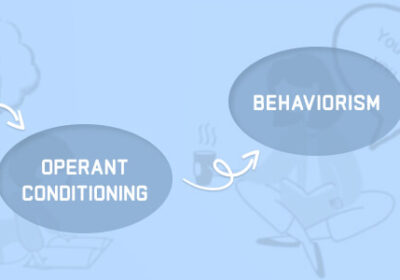Embracing Flexibility: Adapting Workforce Management To Hybrid Models
The modern workplace has undergone a transformation in recent years, especially in the context of an unforeseen global shift that prompted the rapid adoption of remote work. As organizations navigate these changes toward establishing a hybrid Model, they face new opportunities and challenges in managing a distributed workforce. This article delves into the nuances of hybrid work environments and provides insightful strategies for effective workforce management.
The Hybrid Workplace Model: A General Overview
In a hybrid model, the organization mixes in-office and remote work. They do so to offer more support and flexibility to employees. This also helps employees to have a better work-life balance. Furthermore, in this workplace model, employees are able to enjoy more work-life balance. As a result, employees also feel more engaged in the work that they do. Moreover, by having a hybrid workplace model, employers get a productive, stable, and healthy workforce.
However, having a hybrid model does not always give good results. Also, this model is difficult to implement, especially in its initial stages. Hence, it is important to implement this workplace model strategically. While you are implementing it, you must take advantage of modern HR technologies that provide better connection, collaboration, and better engagement among employees.
Hybrid Work Models: A New Era
Hybrid work models combine the flexibility of remote work with the structured environment of a traditional office. Employees have the opportunity to blend work-from-home arrangements with periodic office presence, creating a balanced work-life integration. These models offer the potential to boost productivity, attract a wider talent pool, and reduce operational costs.
Building Inclusive Cultures

In a hybrid setup, fostering an inclusive culture is paramount. This entails designing workflows that are accessible and equitable, regardless of the employee’s location. Managers should ensure that all team members feel connected and valued, with equal access to resources and opportunities for growth.
For many businesses, considering outsourcing human resources functions can also be a strategic component of managing a hybrid workforce. By utilizing external expertise, companies can streamline their HR processes, ensuring consistent policy implementation and compliance across all employees, irrespective of their physical work location.
The Dual-Edged Sword of Hybrid Work
While the perks of hybrid models are significant, they come paired with their own set of challenges. The foremost is maintaining consistent communication and collaboration across dispersed teams. Furthermore, ensuring fairness and inclusion for remote employees vis-à-vis their in-office colleagues can be a tightrope walk. Juggling these dynamics requires a well-thought-out management approach.
Strategies for Effective Management
Adapting to a hybrid work model necessitates proactive strategies. Encouraging frequent communication through virtual team-building activities and establishing clear guidelines for remote work are crucial steps. Additionally, leveraging technology for seamless collaboration helps in bridging the physical distance among team members.
Maintaining Organizational Culture and Values
Hybrid work models can dilute a company’s culture and values if not managed attentively. It’s essential to regularly communicate the organization’s vision and principles, incorporating them into everyday operations. Celebrating successes and recognizing contributions can reinforce a sense of unity and purpose among dispersed teams.
KPIs and Performance Measurement

Key Performance Indicators (KPIs) must be redefined in the context of hybrid workplaces. Metrics should focus on results rather than hours logged, celebrating quality and efficiency. Regular feedback sessions can offer insights into individual performances, driving motivation and continuous improvement.
Navigating the Challenges
No solution fits all, and the hybrid work model is no exception. Challenges such as time-zone differences, technology hiccups, and data security must be addressed strategically. Regular assessments and adjustments are vital to tackle such issues proactively, ensuring a smooth and secure workflow.
Technology as a Cornerstone
The right technology stack is non-negotiable for a successful hybrid work model. Investment in secure, user-friendly platforms facilitates collaboration and maintains productivity, regardless of where employees are working. Continuous training and tech support can help maximize the tools’ effectiveness, ensuring that all team members are comfortable and proficient in using them.
Enhancing Employee Autonomy
Empowering employees with autonomy in a hybrid work setting can lead to higher job satisfaction and improved performance. By granting staff the freedom to manage their schedules and make decisions about their work environment, companies can cultivate a more engaged and responsible workforce. Trust and flexibility play pivotal roles in this approach, and managers must be willing to relinquish some control to reap the benefits.
Sustainable Practices for Long-Term Success
As organizations settle into hybrid work models, it’s crucial to consider the long-term sustainability of these practices. This involves regular review and iteration of policies to accommodate evolving employee needs and business goals. A sustainable hybrid work model should adapt to future technological advancements and remain flexible enough to handle any unforeseen global developments that could impact the workplace.
Major Pros And Cons Of The Hybrid Model
It is important for hybrid models to adapt to the changing workforce needs of businesses and individuals. Furthermore, these models will also allow an organization’s employees to improve their work-life balance. This will also result in better autonomy and efficiency. Despite that, one cannot deny that the office is the best place for employees to work and collaborate.
The following are some of the major pros and cons of the hybrid model for workforce management:
Pros Of The Hybrid Model
Here are the major pros of the hybrid model which will benefit you:
- It will lead to an improved work-life balance for the employees. Here, employees can work with flexibility. Even if an employee does remote work as per general office hours, the employee still does not have to spend time on travel.
- Having a hybrid arrangement also improves productivity and personal well-being at work. This helps in providing better results at the workplace.
- Employees can also make better use of time. Furthermore, the company will also be able to control work hours, but in the meantime, it can have better productivity.
- This will lead to less employee burnout and higher productivity since employees feel that they are spending more time at work than they generally do.
Cons Of The Hybrid Model
Here are a few cons of the hybrid model that you will need to stay aware of:
- When employees are away from their workplace and are working remotely, they do not have full access to tools and resources. Hence, it might lead to a disruption of workplace efficiency.
- Employees feel less connected to the culture and workplace environment of the organization. This can also disrupt the flow of work and work processes.
- It is almost impossible to cultivate the organizational culture in a remote environment. Furthermore, a hybrid model leads to some challenges in teamwork and workplace relationships.
Hence, you can see that hybrid work requires extensive coordination of schedules and meetings. Here, you will have to determine the time when others are available for work and also keep track of who is present at work. Basically, you will have a part of your audience in the office and a part of your audience online.
Conclusion
The hybrid work model is a dynamic and promising change in the workforce landscape. Embracing flexibility while carefully managing the inherent challenges can lead to a thriving and resilient organization. By adopting effective strategies to promote communication, inclusivity, and a strong organizational culture, businesses can harness the full potential of their hybrid workforce.
Continue Reading:



